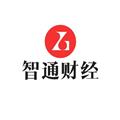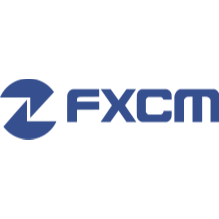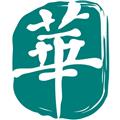阿根廷比索
阿根廷比索簡介
阿根廷貨幣名稱爲比索。80年代後半期,阿根廷靠印刷鈔票彌補財政赤字,出現了惡性通貨膨脹。梅內姆政府執政期間,爲遏制通貨膨脹,將本國貨幣比索與美元掛鉤,採取比索與美元1比1的固定匯率制度。德拉魯阿上臺以後,沿用了這種固定匯率制度。機械地實行這種匯率制度雖使通貨膨脹得到了控制,但也付出了高昂的代價。隨着經濟全球化趨勢的發展,維系阿根廷比索的美元價格急劇增長,比索的幣值因而也遠遠高於其實際價值,從而大大削弱了阿根廷出口產品的競爭力,隨之而來的是國內失業率大幅增長。
阿根廷比索識別
1、紙幣各面額正面圖案均突出人像。
2、紙幣各面額規格均相同,154mm*65mm。
3、紙幣各面額背面圖案多爲建築物。
4、硬幣均爲圓形,1比索爲兩個同心圓,正面中間有國徽。
阿根廷比索制造工藝
1、鈔票紙內潛埋有紅、綠、藍彩色纖維和無色熒光纖維,在紫外光下呈現黃色熒光。另有滿版八角星水印。
2、各鈔採用單色或三色雕刻凹版油墨印刷,富有接线、對印、套印圖案。
3、票面上還具有光變油墨、鋼印圖案。
Monetary History of Argentina
At the beginning of the 20th century, the Argentine peso was one of the most traded currencies in the world. However, throughout the century, the economy collapsed several times, and the country experienced periods of inflation and hyperinflation that led to changes in the system.
Peso before 1826
The peso was a name often used for the silver Spanish 8 reales coin. Following Independence, Argentina began issuing its own coins, denominated in reales, soles and escudos, including silver 8 reales (or soles) coins still known as pesos. These coins, together with those from neighbouring countries, circulated until 1881.
Peso Fuerte 1826–1881
In 1826, two paper money issues began, denominated in pesos. One, the peso fuerte ($F) was a convertible currency, with 17 pesos fuertes equal to one Spanish ounce (27.0643 g) of 0.916 fine gold. This was changed in 1864 when the rate dropped to 16 pesos fuertes per gold ounce. It was replaced by the peso moneda nacional at par in 1881.
Peso Moneda Corriente, 1826–1881
The peso moneda corriente ($m/c) was also introduced in 1826 but was an inconvertible currency. It started at par with the peso fuerte, but depreciated and was replaced in 1881 by the peso moneda nacional at a rate of 25 to 1.
Peso Moneda Nacional, 1881–1969
Although the Argentine Confederation issued 1, 2 and 4 centavos coins in 1854, with 100 centavos = 1 peso = 8 reales, Argentina did not decimalize until 1881. The peso moneda nacional (m$n or $m/n) replaced the earlier currencies at the rate of 1 peso moneda nacional = 8 reales = 1 peso fuerte = 25 peso moneda corriente. Initially, one peso moneda nacional coin was made of silver and known as patacon. However, the 1890 economic crisis ensured that no further silver coins were issued.
Peso Oro Sellado, 1881–1929
The peso oro sellado was a convertible paper currency equal to 1.4516 grams of fine gold.
Peso Ley, 1970–1983
The peso ley 18.188 (called simply the peso ley), replaced the previous currency at a rate of one peso ley to 100 pesos moneda nacional.
Peso Argentino, 1983–1985
The peso argentino ($A), replaced the previous currency at a rate of one to ten thousand. The currency was born soon after the arrival of democracy. However, soon after it lost its purchasing power too after a number of devaluations which ended up with its substitution by a new currency called Austral in June 1985.
Austral, 1985–1991
The austral (the symbol was an uppercase A with an extra horizontal line), replaced the peso argentino at a rate of one austral for one thousand pesos. During the period of circulation of the austral, Argentina suffered from hyperinflation. The last months of President Raul Alfonsín's period in office in 1989 saw prices move up constantly (200% in July alone), with a subsequent fall in the value of the currency. Emergency notes were issued (worth 10,000, 50,000 and 500,000 australes) and provincial administrations issued their own currency for the first time in decades. The value of the currency was stabilized soon after President Carlos Menem was elected.
Peso Convertible, 1992–present
The peso replaced the austral at a rate of one to ten thousand. It was also referred to as peso convertible since the international exchange rate was fixed by the Central Bank at one U.S. dollar to one peso, and for every peso convertible circulating, there was a U.S. dollar in the Central Bank's foreign currency reserves. The end result of this replacement was that one peso would be worth 10,000,000,000,000 pesos moneda nacional today. However, after the economic debacle of 2001, the fixed exchange rate system was abandoned. Since January 2002, the exchange rate fluctuated, up to a peak of four pesos to one dollar (that is, a 75% devaluation). The exports boom then produced a massive inflow of dollars into the Argentine economy, which helped lower their price. On the other hand, the current administration has publicly acknowledged a strategy of keeping the exchange rate between 2.90 to 3.10 pesos per U.S. dollar, in order to maintain the competitiveness of exports and encourage import substitution by local industries. When necessary, the Central Bank emits pesos and buys dollars in the free market (sometimes large amounts, in the order of 10 to 100 million US Dollars per day) to keep the dollar price from dropping, and had amassed over 27,000 million US Dollars in reserves before the 9,810 million US Dollars payment to the International Monetary Fund in January 2006.
Note that the highest valued peso banknote is the AR$100, worth only about US$33. Prices in Argentina are lower than those in the United States in terms of purchasing power parity, so there is little need for higher valued banknotes.
1ARP=100 centavos
阿根廷比索樣幣
Peso Convertible Banknotes (1992–present)
1 Peso Converible = 10,000 Australs
阿根廷比索鑄幣
阿根廷貨幣名稱爲比索。80年代後半期,阿根廷靠印刷鈔票彌補財政赤字,出現了惡性通貨膨脹。梅內姆政府執政期間,爲遏制通貨膨脹,將本國貨幣比索與美元掛鉤,採取比索與美元1比1的固定匯率制度。德拉魯阿上臺以後,沿用了這種固定匯率制度。機械地實行這種匯率制度雖使通貨膨脹得到了控制,但也付出了高昂的代價。隨着經濟全球化趨勢的發展,維系阿根廷比索的美元價格急劇增長,比索的幣值因而也遠遠高於其實際價值,從而大大削弱了阿根廷出口產品的競爭力,隨之而來的是國內失業率大幅增長。
阿根廷比索識別
1、紙幣各面額正面圖案均突出人像。
2、紙幣各面額規格均相同,154mm*65mm。
3、紙幣各面額背面圖案多爲建築物。
4、硬幣均爲圓形,1比索爲兩個同心圓,正面中間有國徽。
阿根廷比索制造工藝
1、鈔票紙內潛埋有紅、綠、藍彩色纖維和無色熒光纖維,在紫外光下呈現黃色熒光。另有滿版八角星水印。
2、各鈔採用單色或三色雕刻凹版油墨印刷,富有接线、對印、套印圖案。
3、票面上還具有光變油墨、鋼印圖案。
Monetary History of Argentina
At the beginning of the 20th century, the Argentine peso was one of the most traded currencies in the world. However, throughout the century, the economy collapsed several times, and the country experienced periods of inflation and hyperinflation that led to changes in the system.
Peso before 1826
The peso was a name often used for the silver Spanish 8 reales coin. Following Independence, Argentina began issuing its own coins, denominated in reales, soles and escudos, including silver 8 reales (or soles) coins still known as pesos. These coins, together with those from neighbouring countries, circulated until 1881.
Peso Fuerte 1826–1881
In 1826, two paper money issues began, denominated in pesos. One, the peso fuerte ($F) was a convertible currency, with 17 pesos fuertes equal to one Spanish ounce (27.0643 g) of 0.916 fine gold. This was changed in 1864 when the rate dropped to 16 pesos fuertes per gold ounce. It was replaced by the peso moneda nacional at par in 1881.
Peso Moneda Corriente, 1826–1881
The peso moneda corriente ($m/c) was also introduced in 1826 but was an inconvertible currency. It started at par with the peso fuerte, but depreciated and was replaced in 1881 by the peso moneda nacional at a rate of 25 to 1.
Peso Moneda Nacional, 1881–1969
Although the Argentine Confederation issued 1, 2 and 4 centavos coins in 1854, with 100 centavos = 1 peso = 8 reales, Argentina did not decimalize until 1881. The peso moneda nacional (m$n or $m/n) replaced the earlier currencies at the rate of 1 peso moneda nacional = 8 reales = 1 peso fuerte = 25 peso moneda corriente. Initially, one peso moneda nacional coin was made of silver and known as patacon. However, the 1890 economic crisis ensured that no further silver coins were issued.
Peso Oro Sellado, 1881–1929
The peso oro sellado was a convertible paper currency equal to 1.4516 grams of fine gold.
Peso Ley, 1970–1983
The peso ley 18.188 (called simply the peso ley), replaced the previous currency at a rate of one peso ley to 100 pesos moneda nacional.
Peso Argentino, 1983–1985
The peso argentino ($A), replaced the previous currency at a rate of one to ten thousand. The currency was born soon after the arrival of democracy. However, soon after it lost its purchasing power too after a number of devaluations which ended up with its substitution by a new currency called Austral in June 1985.
Austral, 1985–1991
The austral (the symbol was an uppercase A with an extra horizontal line), replaced the peso argentino at a rate of one austral for one thousand pesos. During the period of circulation of the austral, Argentina suffered from hyperinflation. The last months of President Raul Alfonsín's period in office in 1989 saw prices move up constantly (200% in July alone), with a subsequent fall in the value of the currency. Emergency notes were issued (worth 10,000, 50,000 and 500,000 australes) and provincial administrations issued their own currency for the first time in decades. The value of the currency was stabilized soon after President Carlos Menem was elected.
Peso Convertible, 1992–present
The peso replaced the austral at a rate of one to ten thousand. It was also referred to as peso convertible since the international exchange rate was fixed by the Central Bank at one U.S. dollar to one peso, and for every peso convertible circulating, there was a U.S. dollar in the Central Bank's foreign currency reserves. The end result of this replacement was that one peso would be worth 10,000,000,000,000 pesos moneda nacional today. However, after the economic debacle of 2001, the fixed exchange rate system was abandoned. Since January 2002, the exchange rate fluctuated, up to a peak of four pesos to one dollar (that is, a 75% devaluation). The exports boom then produced a massive inflow of dollars into the Argentine economy, which helped lower their price. On the other hand, the current administration has publicly acknowledged a strategy of keeping the exchange rate between 2.90 to 3.10 pesos per U.S. dollar, in order to maintain the competitiveness of exports and encourage import substitution by local industries. When necessary, the Central Bank emits pesos and buys dollars in the free market (sometimes large amounts, in the order of 10 to 100 million US Dollars per day) to keep the dollar price from dropping, and had amassed over 27,000 million US Dollars in reserves before the 9,810 million US Dollars payment to the International Monetary Fund in January 2006.
Note that the highest valued peso banknote is the AR$100, worth only about US$33. Prices in Argentina are lower than those in the United States in terms of purchasing power parity, so there is little need for higher valued banknotes.
1ARP=100 centavos
阿根廷比索樣幣
Peso Convertible Banknotes (1992–present)
1 Peso Converible = 10,000 Australs
阿根廷比索鑄幣
-
阿根廷比索鑄幣
熱門專欄更多
文章數量:9320
最新文章
美元/新加坡元 當日內: 看漲。
文章數量:8351
文章數量:4607
文章數量:2692
最新文章
以色列對伊朗進行報復性打擊後油價飆升
文章數量:1436
文章數量:1157
最新文章
小鵬力求上進,卻難展翅?
熱門資訊更多
新西蘭元/美元 當日內: 看跌,在 0.5904 之下。
04/20 03:22
KVB昆侖國際
美元/新加坡元 當日內: 看漲。
04/20 03:22
KVB昆侖國際
美元/日元 當日內: 看漲,當 154.21 爲支撐位,目標定在155.36。
04/20 03:21
KVB昆侖國際
英鎊/日元 當日內: 看跌,在 191.70 之下。
04/20 03:21
KVB昆侖國際
英鎊/美元 當日內: 看跌,在 1.2392 之下。
04/20 03:21
KVB昆侖國際
EUR/NZD 當日內: 看漲,當 1.8060 爲支撐位,目標定在1.8158。
04/20 03:21
KVB昆侖國際






